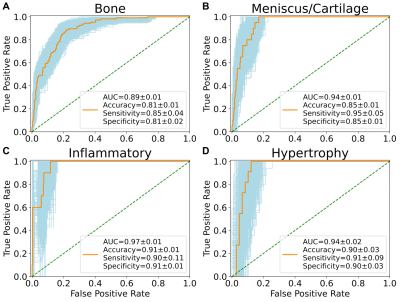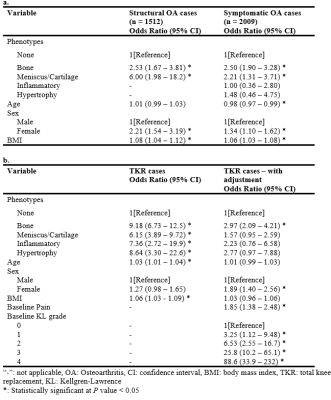Nikan K Namiri1, Jinhee Lee1, Bruno Astuto1, Felix Liu1, Rutwik Shah1, Sharmila Majumdar1, and Valentina Pedoia1
1Department of Radiology and Biomedical Imaging and Center for Intelligent Imaging, University of California, San Francisco, San Francisco, CA, United States
1Department of Radiology and Biomedical Imaging and Center for Intelligent Imaging, University of California, San Francisco, San Francisco, CA, United States
We
built an end-to-end deep learning model to rapidly stratify knees into morphological
phenotypes using a large, longitudinal cohort with knee OA. We examined associations
of phenotypes with the odds of having concurrent OA as well as the odds of OA progression.

Figure 1. Receiver operating characteristic curves with
area under curve (AUC), accuracy, sensitivity, and specificity of the neural
network phenotype classifiers. Metrics reported in mean ± standard deviation.

Table
4. Association
between phenotypes and longitudinal OA outcomes. We
only considered bone and meniscus/cartilage phenotypes in structural OA
analyses because the number of baseline knees with inflammatory and hypertrophy
phenotypes who acquired structural OA at 48 months were 3 and 2, respectively.
